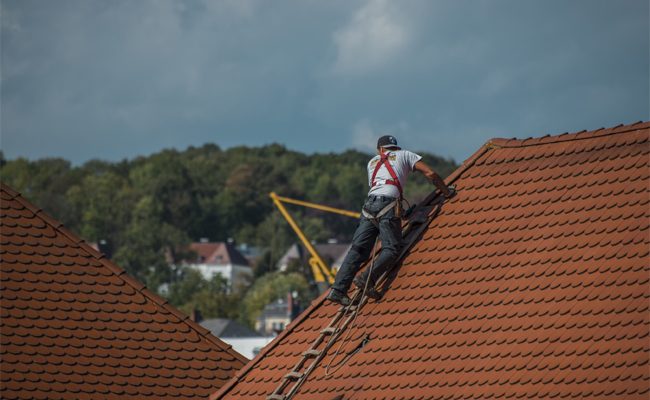
As a homeowner, there are few things as unsightly and frustrating as a leaking roof. Not only do stained ceilings and mold patches ruin your home’s outlook, but they are also serious health risks and signify a bigger problem that should be addressed immediately.
However, finding and fixing a roof leak can often be rather complicated. If you suspect that your roof may be leaking, you should look for a roof repair company before the damage worsens. Keep on reading to learn how to find a leaking roof and some quick solutions for roof repair.
The Dangers of Roof Leaks
Your roof health should be your top priority regarding maintenance around the house. If you’ve been hearing little drip-drips of water or spotted stains on your ceiling, get them sorted before they become major issues. A roof leak can rapidly deteriorate and becomes difficult and very expensive to repair over time.
If a leak is not timely repaired, your floorboards, structural timbers, and insulation can become damp, leading to mold growth and rotting wood. Mold and mildew spread rapidly and are difficult to get rid of, posing significant health risks, especially for those with existing immunity or lung issues. This can also make your house smell musty and unclean, and a leaky roof becomes a serious fire hazard if the water gets in contact with any electric sources.
How To Find The Location Of A Roof Leak
While a wet patch on your ceiling is a strong sign of a leaking roof, finding the actual location of the leak is not as simple. Often, the location of the leak is not where the water eventually ends up forming a stain on your paintwork. Water can seep into your roof from one end of the house, trickle down through insolation, and eventually form a water stain in some weak spot in your ceiling.
If you want to pinpoint the location of the leak, here is what you should do.
- Take a walk outside your house and visually check your roof.
- Start with the higher parts of the roof and look for any obvious signs of roof penetrations or damage on your shingles, iron sheets, or roof tiles. If you find any such spot, it could be the location of the leak.
- Note that leaking signs can be spotted several feet away from obvious damaged spots, so make sure to carefully examine your entire roof and not just the area near the water stains.
- Look for any water spots under your roofline on exterior walls. These may indicate that damaged flashing is causing the leak and should be repaired/replaced immediately with a high-quality product like this example from Agora Marketplace.
If you can’t spot any damage to your roof from the outside, head inside for a closer inspection of the interior of your home.
- Carefully inspect your ceiling and look for moisture marks, peeling paint, or discolored (brown/gray/yellow) stains.
- Grab a flashlight and inspect your roof space/attic. Look out for water stains, mold, or any damp rafters or beams, and try to follow the flow of water to the source of the leak.
- Travel upwards from the source of the leak, looking for dampness on the underside/framing of your roof.
- If you can’t spot noticeable water stains, look for paint discolorations. These could be marks left by evaporated moisture if the weather in your area has been dry for a few days.
- Inspect your roof/attic in the daylight, and switch off any interior light sources to see if you can pinpoint where the sun is entering your house. These could be the source of the leaks.
Make sure to stay on secure framing while you conduct the inspection. Never stand on the insulation or the topside of the ceiling while examining your roof.
How to Fix a Roof Leak
Once you’ve identified the problem area, you should try and fix the leak as soon as possible to save money, time, and hassle in the long run.
However, you should never try and repair your roof if it’s raining. Any roof repair work should be done on a warm, dry day, at least 72 hours after the last rainfall. This prevents your roofing material from cracking/damaging during the process and reduces the likelihood of slips/injuries while you work.
To learn how to repair some common roof damages, click here.
If you want to cover or temporarily patch up your roof, here is what you should do.
- Find some two-by-fours and a heavy plastic polyethylene sheeting large enough to cover the leaking section of the roof from the bottom to the top.
- Wrap one end of the sheet around a two-by-four and staple it in place, and then add a second piece next to it and staple (sandwich) the two boards together with large nails.
- Do the same thing on the other side.
- Stretch the plastic to the roof’s peak and down the other side to ensure you have enough coverage.
- Use the other pair of sandwiched boards to weigh down the plastic sheeting on the other side to hold it in place.
This acts as a temporary cover to keep any moisture and debris out of your house until a proper commercial repair can be performed. While you might be able to tackle minor damages on your own, make sure to get expert help from a roofing company for more complex, permanent repairs.
Leave a Reply